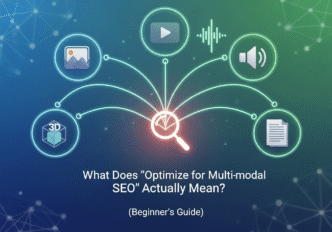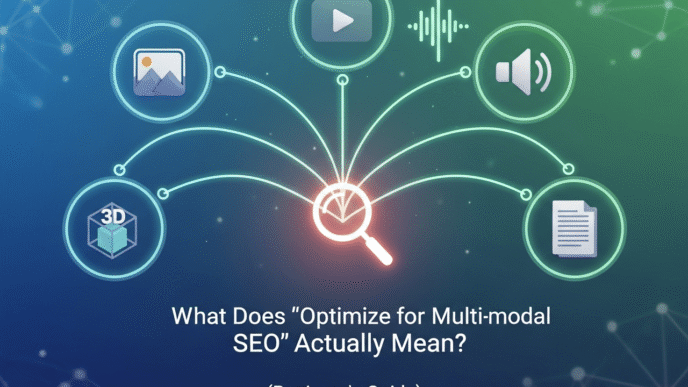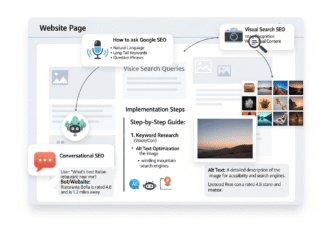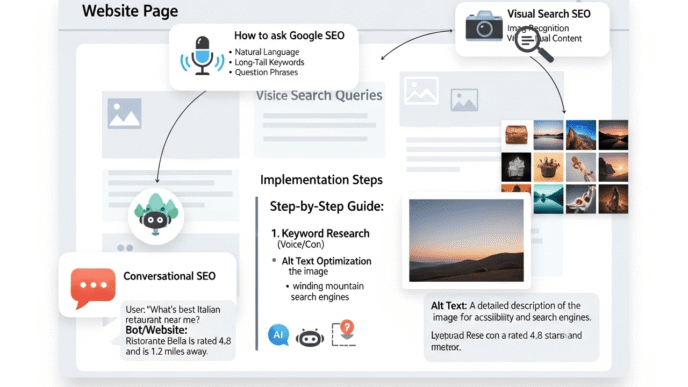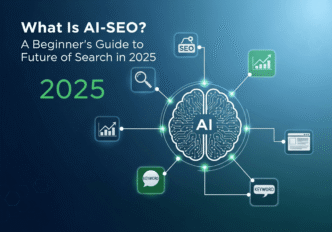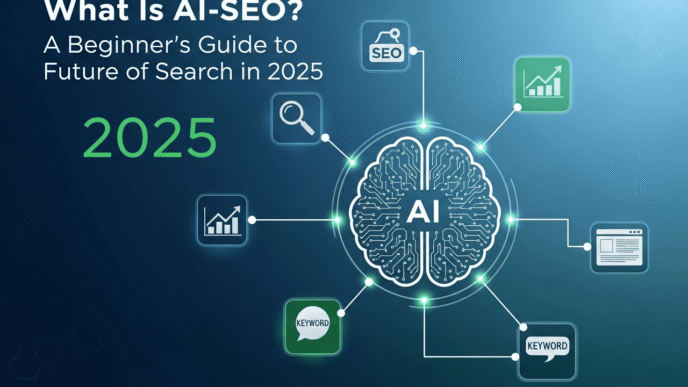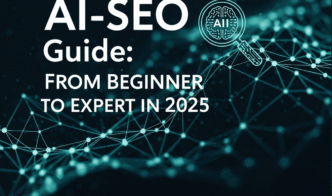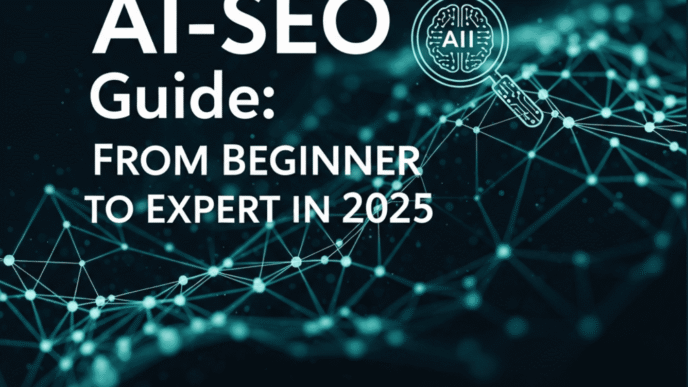Ever felt like you’re playing a game where the rules keep changing, but nobody tells you what they are? Welcome to the world of the Google algorithm—the mysterious force that decides whether your content ranks #1 or gets buried on page 50.
Here’s the thing: understanding how Google’s search ranking algorithm works isn’t rocket science. It’s more like learning to cook—once you know the basic ingredients and techniques, you can whip up something amazing.
Table of Contents
Toggle
What Exactly Is the Google Algorithm? (And Why Should You Care?)
The Google algorithm is basically a complex set of rules and calculations that decides which websites deserve to show up when you search for something. Think of it as the world’s pickiest librarian who has to sort through billions of web pages in milliseconds.
Every single day, Google processes over 8.5 billion searches. That’s 99,000 searches per second!
But here’s where it gets interesting: Google doesn’t use just one algorithm. Nope, they use hundreds of ranking signals and multiple core algorithm systems working together like a well-oiled machine. Or sometimes, like a bunch of caffeinated robots having a dance-off.
How Does Google Ranking Algorithm Work in 2025? The Simple Version
Let me break this down without the tech jargon. Google’s search ranking algorithm follows a pretty logical process:
First, Google discovers your content through crawling (like a spider exploring the web—hence “web crawler”). Then it indexes your pages, basically creating a massive library card catalog.
When someone searches for something, Google’s algorithm springs into action. It considers over 200 ranking factors to decide which pages best answer the searcher’s question.
Pro Tip: Google’s algorithm isn’t trying to be mean to your website. It’s trying to be helpful to searchers. When you align your goals with Google’s (helping people find great answers), magic happens.
What Factors Does Google Algorithm Consider for Ranking? The Big Players
Content Quality and Relevance
This is the heavyweight champion of ranking factors. Google’s gotten scary-good at understanding whether your content actually helps people or just wastes their time.
The algorithm looks at things like content depth, originality, and whether you actually answer the question someone’s asking. No more keyword stuffing your way to the top—those days are gone, my friend.
E-E-A-T (Experience, Expertise, Authoritativeness, Trustworthiness)
Google wants to know: are you qualified to talk about this topic? This is especially crucial for YMYL topics (Your Money or Your Life)—think health, finance, and legal advice.
If you’re writing about heart surgery, Google wants to see you’re a cardiologist, not someone who watched a YouTube video once.
User Experience Signals
Remember when websites looked like they were designed by a hyperactive toddler with a crayon? Google doesn’t like that either.
The algorithm now heavily considers Core Web Vitals—basically, how fast your site loads, how stable it is, and whether buttons actually work when people click them. Revolutionary stuff, right?
Understanding Google’s Core Algorithm Updates: The Game Changers
Let’s talk about the major algorithm updates that shaped how search works today. Think of these as Google’s “plot twists” that kept SEOs on their toes.
Panda Update (2011) – The Content Quality Police
Panda came in like a wrecking ball for low-quality content. Suddenly, those 200-word articles about “best pizza toppings” weren’t cutting it anymore.
This update taught us that thin content is about as useful as a chocolate teapot.
Penguin Update (2012) – The Link Spam Terminator
Remember when people bought links like they were shopping on Black Friday? Penguin put an end to that party.
It targeted manipulative link building and made quality backlinks worth their weight in gold.
Hummingbird Update (2013) – The Mind Reader
Hummingbird helped Google understand search intent—what people actually mean, not just what they type.
Searching for “place that sells paint near me” started showing hardware stores, not articles about the history of paint. Mind-blowing, right?
RankBrain (2015) – The AI Revolution
Google introduced machine learning to its algorithm with RankBrain. It’s like Google hired a really smart intern who learns from every search.
This system helps Google understand never-before-seen queries—which make up 15% of all searches. That’s a lot of weird questions, folks.
BERT Update (2019) – The Context King
BERT helps Google understand the nuances of language. It knows the difference between “to” and “two” and understands that “bank” might mean a financial institution or the side of a river.
Pro Tip: BERT rewards natural writing. Write like you talk to a smart friend, not a robot. Google’s algorithm is sophisticated enough to appreciate good conversational content.
Helpful Content Update (2022-2024) – The People-First Revolution
This ongoing update series is Google’s war on content created just for search engines. It rewards people-first content that actually provides value.
If your content sounds like it was written by AI for AI, you’re gonna have a bad time.
How Modern Core Ranking Systems Work Together
Think of Google’s algorithm as an orchestra where different systems play different instruments. Here’s how the main players work together:
The Information Retrieval System
This is the foundation—it finds and organizes information from across the web. It’s constantly crawling and indexing new content, like a very enthusiastic librarian who never sleeps.
The Ranking System
Once information is retrieved, the ranking system evaluates which results are most relevant and helpful. It considers hundreds of signals from content quality to user location.
The Spam Detection System
Google’s SpamBrain is like the bouncer at an exclusive club. It identifies and filters out spammy content, link schemes, and other attempts to game the system.
This system has gotten incredibly sophisticated—it can spot AI-generated spam and cloaking techniques from a mile away.
Comparison Table: Major Google Algorithm Components
| Algorithm Component | Primary Focus | Impact on Rankings | First Introduced | Current Status |
|---|---|---|---|---|
| PageRank | Link authority | High | 1998 | Still active, evolved |
| Panda | Content quality | Very High | 2011 | Integrated into core |
| Penguin | Link spam | High | 2012 | Real-time since 2016 |
| Hummingbird | Query understanding | High | 2013 | Core component |
| RankBrain | Machine learning | Very High | 2015 | Major ranking signal |
| BERT | Natural language | High | 2019 | Active and expanding |
| MUM | Multimodal understanding | Growing | 2021 | Rolling out features |
| Helpful Content | User-first content | Very High | 2022 | Continuously updated |
What Are LSI Keywords and How Does Google Use Them?
LSI (Latent Semantic Indexing) keywords are basically related terms that help Google understand context. They’re not synonyms—they’re conceptually related words.
For example, if you’re writing about “apple,” LSI keywords help Google know whether you mean the fruit (orchard, juice, pie) or the tech company (iPhone, Mac, Steve Jobs).
Google’s semantic search capabilities have evolved way beyond simple keyword matching. The algorithm now understands topic modeling and entity relationships.
The Role of Artificial Intelligence in Google’s Algorithm
AI isn’t just a buzzword here—it’s the backbone of modern search. Google uses machine learning models to understand queries, evaluate content quality, and even predict what you’re going to type next.
MUM (Multitask Unified Model) is Google’s latest AI advancement. It’s 1,000 times more powerful than BERT and can understand information across 75 languages and different formats.
Imagine asking Google a complex question like “I’ve hiked Mt. Adams and now want to hike Mt. Fuji next fall, what should I do differently to prepare?” MUM can understand you need info about weather, gear, training, and permits—all from one query.
Local Search Algorithm: A Different Beast Entirely
The local search algorithm operates differently from regular search. It heavily weighs three main factors:
Relevance – How well your business matches what someone’s searching for.
Distance – How far you are from the searcher (or the location they specify).
Prominence – How well-known and reputable your business is, both online and offline.
Pro Tip: For local SEO, your Google Business Profile is pure gold. Keep it updated, respond to reviews, and post regularly. The local algorithm loves active businesses.
How to Optimize for Voice Search and Google’s Algorithm
With smart speakers everywhere, voice search optimization has become crucial. Voice searches tend to be more conversational and longer than typed queries.
The algorithm handles voice searches differently—it often provides a single answer (featured snippet) rather than a list of results.
To optimize for voice search, focus on natural language, question-based content, and conversational keywords. Think about how people actually talk, not how they type.
Mobile-First Indexing: The New Normal
Since 2019, Google predominantly uses the mobile version of your content for indexing and ranking. If your site looks great on desktop but terrible on mobile, you’re in trouble.
The algorithm evaluates your mobile site for everything—content, structured data, images, and user experience. Desktop-only elements might as well not exist.
This isn’t just about being responsive. It’s about mobile user experience, loading speed, and ensuring all your important content is accessible on mobile devices.
The Future of Google’s Algorithm: What’s Coming Next?
Google’s moving toward what they call “ambient computing”—search that happens naturally without you even realizing it. The algorithm is becoming more predictive, more personal, and more multimodal.
Visual search is exploding. Google Lens processes billions of searches, and the algorithm is getting better at understanding images, videos, and even augmented reality.
We’re also seeing the rise of zero-click searches, where Google provides answers directly in search results. The algorithm is becoming less about sending you to websites and more about being the answer itself.
Real-World Example: How Understanding the Algorithm Transformed a Small Business
Let me tell you about Sarah’s bakery website (name changed for privacy). She was stuck on page 3 for “custom birthday cakes Chicago” despite having amazing cakes.
After understanding how Google’s core algorithm works, she made strategic changes. She added detailed descriptions focusing on user intent, improved her page load speed from 8 seconds to 2 seconds, and started getting genuine customer reviews.
She also created helpful content answering questions like “how far in advance should I order a custom cake?” and “what’s the difference between buttercream and fondant?”—the stuff her actual customers asked.
Result? Within 6 months, she ranked #2 for her main keyword and her online orders increased by 340%. No tricks, no hacks—just aligning with what the algorithm actually wants.
Common Algorithm Myths Debunked
Myth 1: “Google Updates Target Specific Sites”
Nope. Algorithm updates are about improving search quality overall. If you got hit, you probably had issues that the update addressed.
Myth 2: “Exact Match Domains Guarantee Rankings”
Having “best-pizza-chicago.com” won’t magically rank you #1 for “best pizza Chicago.” Content and user experience matter way more.
Myth 3: “More Content Always Equals Better Rankings”
Quality beats quantity every time. One amazing, comprehensive article outperforms ten mediocre ones.
Myth 4: “Social Media Signals Directly Impact Rankings”
While social shares can indirectly help (more visibility = more links), they’re not a direct ranking factor.
Pro Tips from the Trenches
From John Mueller (Google Search Advocate): “Focus on making your site awesome for users. If you’re doing things primarily for search engines, you’re probably on the wrong track.”
Pro Tip: Stop chasing algorithm updates. Instead, focus on creating genuinely helpful content that serves your audience. Google’s algorithm updates almost always reward sites that were already doing the right thing.
Pro Tip: Use Google’s Search Console religiously. It’s free data straight from Google about how your site performs in search. It’s like having a direct line to the algorithm’s feedback.
Pro Tip: Page speed matters more than ever. Use Google’s PageSpeed Insights to identify issues. Every second of load time you shave off is like giving your rankings a little boost.
How to Stay Updated with Algorithm Changes
Following algorithm updates shouldn’t feel like a full-time job. Here’s how to stay informed without going crazy:
- Follow Google’s Official Channels – Google Search Central Blog is your primary source
- Monitor Your Analytics – Sudden traffic changes often indicate algorithm updates
- Join SEO Communities – Places like r/SEO can provide real-world insights
- Track Your Rankings – But don’t obsess over daily fluctuations
- Read Case Studies – Learn from others’ experiences with updates
Internal Links and Resources
Understanding Google’s algorithm is just one piece of the SEO puzzle. To get the complete picture, check out these essential guides:
- Learn the fundamentals with our complete guide on how search engines work—it’s the perfect companion to this algorithm guide
- Discover why certain pages rank higher in our breakdown of search engine ranking factors
- Master the technical side with our guide on how Google crawls and indexes websites
- Understand user intent and its role in our section about how search engines understand queries
- Get actionable tips from our SEO best practices guide
The Algorithm Checklist: Your Action Items
Here’s your practical checklist for algorithm optimization:
- [ ] Content Quality: Is your content genuinely helpful and comprehensive?
- [ ] User Experience: Does your site load fast and work well on mobile?
- [ ] E-E-A-T Signals: Are you demonstrating expertise and building trust?
- [ ] Technical SEO: Is your site crawlable and properly structured?
- [ ] Search Intent: Are you answering what users actually want to know?
- [ ] Fresh Content: Are you keeping your content updated and relevant?
- [ ] Natural Language: Does your content sound human, not robotic?
- [ ] Core Web Vitals: Are your LCP, FID, and CLS scores in the green?
Final Thoughts: Working With the Algorithm, Not Against It
Here’s the truth bomb: Google’s algorithm isn’t your enemy. It’s actually trying to do the same thing you should be doing—helping people find great information.
The search ranking algorithm has evolved from a simple system that counted keywords to an incredibly sophisticated AI that understands context, intent, and quality. And it’s only getting smarter.
Instead of trying to trick or game the system, focus on being genuinely useful. Create content that makes someone’s day better, answer their questions thoroughly, and provide a great experience.
Remember, behind every search is a real person with a real problem. Solve their problem better than anyone else, and the algorithm will notice.
The best SEO strategy for 2025 and beyond? Be so good that Google can’t ignore you.
Frequently Asked Questions
How often does Google update its algorithm?
Google makes minor changes to its algorithm daily—hundreds of small tweaks per year. Major core updates happen 3-4 times annually, and they usually announce these in advance.
Can I recover from an algorithm penalty?
First, determine if it’s actually a penalty (manual action) or just an algorithm update impact. Manual penalties can be fixed and reviewed. Algorithm impacts require improving your site to meet the new standards—there’s no “submit for reconsideration” button.
How long before algorithm changes affect my rankings?
Minor updates might show impact within days. Major core algorithm updates can take 2-4 weeks to fully roll out. Some sites see immediate changes; others notice gradual shifts over months.
Does Google favor big brands in its algorithm?
Not directly, but big brands often have advantages that the algorithm rewards: more backlinks, better user experience, more content, and stronger E-E-A-T signals. Small sites can absolutely compete by being more focused and helpful in their niche.
How does Google’s algorithm handle AI-generated content?
Google doesn’t automatically penalize AI content, but it must be high-quality, accurate, and helpful. The helpful content system targets low-quality content regardless of how it’s created. If you use AI, always add human expertise, fact-check, and ensure it provides real value.
What’s the most important ranking factor in 2025?
There’s no single “most important” factor—Google uses hundreds of signals. But if pressed, content quality combined with search intent satisfaction are the heavyweight champions. Technical perfection means nothing if your content doesn’t help users.
How does Google’s algorithm detect duplicate content?
Google uses sophisticated fingerprinting techniques to identify duplicate or near-duplicate content. It typically shows the original or most authoritative version. This isn’t a penalty—it’s just filtering to avoid showing the same thing multiple times.
Remember: The Google algorithm is constantly evolving, but its core mission remains the same—connecting people with helpful, relevant information. Focus on that, and you’ll always be on the right track.
Google Algorithm Visual Guide
Understanding Core Ranking Systems & Updates
Major Algorithm Updates Timeline
Panda Update
Targeted thin, low-quality content and content farms. Changed how Google evaluates content quality forever.
Penguin Update
Cracked down on manipulative link building and keyword stuffing. Made quality backlinks essential.
Hummingbird
Introduced semantic search capabilities. Google began understanding context and user intent.
RankBrain
AI-powered ranking signal using machine learning. Helps understand ambiguous queries.
BERT Update
Natural language processing breakthrough. Understands conversational queries and context.
Helpful Content
Ongoing updates rewarding people-first content. Targets content made for search engines.
Core Ranking Factors & Their Importance
How Algorithm Factors Affect Rankings
High Quality Content Scenario
✅ Original, comprehensive content
✅ Matches user search intent
✅ Regular updates and freshness
✅ Strong E-E-A-T signals
💡 Pro Tips for Algorithm Optimization
- Focus on user intent - Google's algorithm prioritizes pages that best answer the searcher's query
- Improve Core Web Vitals - Page speed and user experience are confirmed ranking factors
- Build topical authority - Create comprehensive content clusters around your main topics
- Earn quality backlinks naturally - Focus on creating link-worthy content rather than buying links
- Keep content fresh - Regular updates signal to Google that your content is current and maintained
- Optimize for mobile - Google uses mobile-first indexing for all websites
Interactive Guide by seoprojournal.com
© 2025 SEO Pro Journal - Mastering Google's Algorithm








